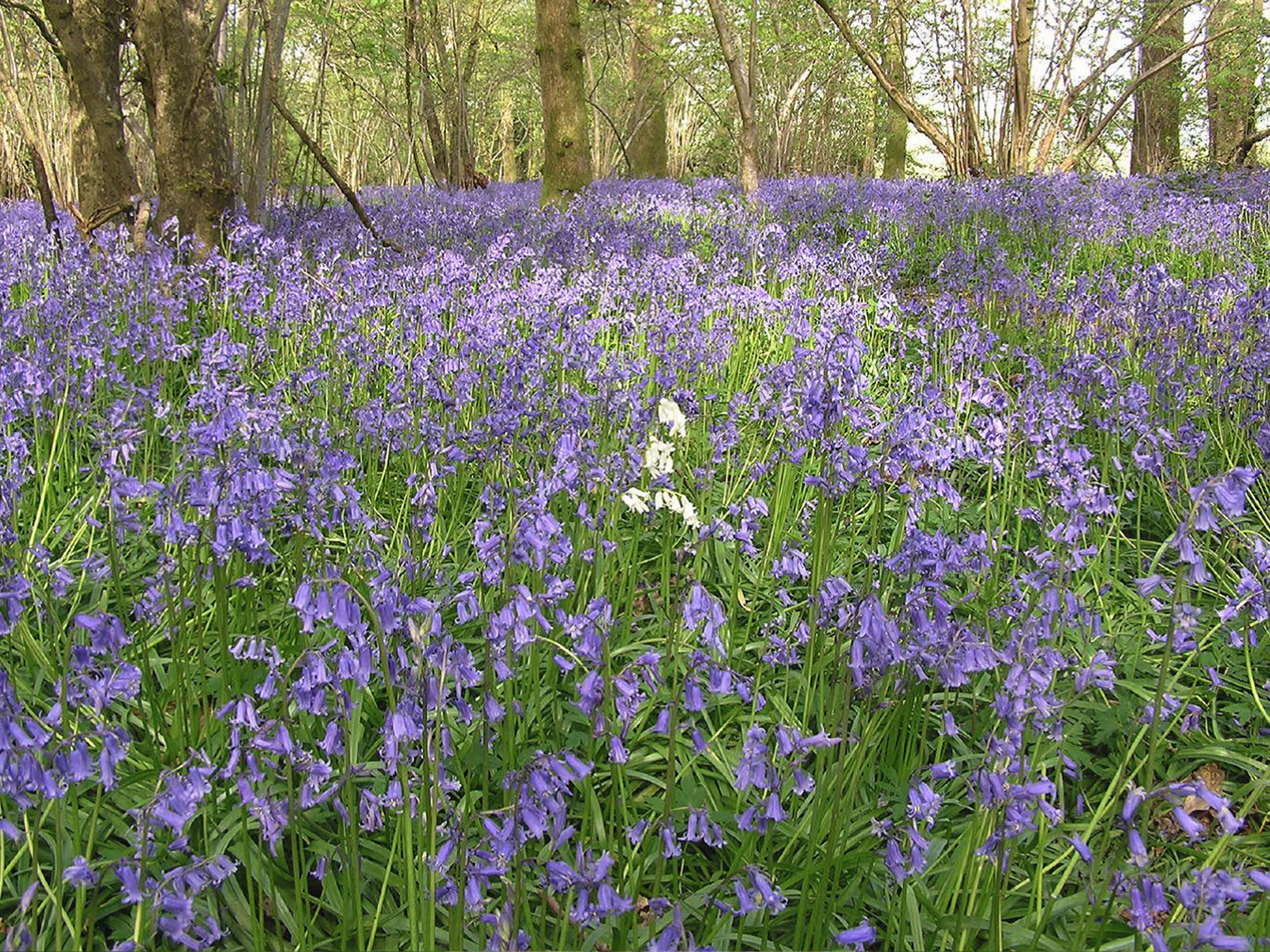Spanish bluebell (left) and native British bluebell (right)
The first scientific test of the genetic threat posed by Spanish bluebells to the native British species (Hyacinthoides non-scripta), shows that UK plants may not be the walkover they were once thought, according to research by an international team led by the Royal Botanic Garden Edinburgh (RBGE).
For more than three centuries, the British bluebell - for which the UK holds almost half the world’s population - has shared its habitat with increasing numbers of introduced non-native bluebells: the Spanish bluebell, and its hybrid with our native British bluebell. This has caused widespread speculation that – like the Scottish wild cat and the native wild apple – ongoing interbreeding could intermix the two gene-pools to such an extent that pure British bluebells become extinct.
Using over 2000 bluebell bulbs extracted from isolated pure native and pure non-native stands in the Scottish Borders, Kohn’s team recorded their flowering time over four separate years. They found a high degree of overlap between the two bluebells’ flowering times, quantifying the potential for interbreeding and genetic mixing.
When they allowed a mixture of the plants to fertilise each other naturally in research plots at RBGE, genetic ‘paternity’ tests of the seeds produced by both native and non-native plants showed, as expected, that hybridisation occurs. Many seeds contained genetic material from both native and non-native sources.
However, there was a distinct asymmetry to the parentage of the next generation of bluebells. British native bluebells were more successful than the newcomers as both male and female parents. Put simply – the British bluebells are more fertile.
Dr Deborah Kohn, of RBGE, explained: “Native plants have higher maternal success, they are ‘more fertile mothers, with a higher proportion of all seeds coming from native bluebells than from non-natives: 57% versus 43%. The difference in paternal success was even more marked, with an approximately 3:1 ratio of seeds fathered by natives compared with non-natives. When examined, the pollen of the non-native bluebells in the UK was often misshapen – indicating lower pollen fertility, compared to the pollen of the native bluebell.”
One explanation for this reduced fertility in the non-native bluebells, is if most or all of the non-native bluebells in the UK are hybrid, rather than any being ‘pure’ Spanish. Although hybrids between many plant species can be fertile, a likely explanation is that there are some genetic incompatibilities between native British bluebells and Spanish bluebells which has led to reduced fertility.
Professor Peter Hollingsworth, Director of Science at RBGE, concluded: “This research forms part of a long-term study into bluebells in the UK, and there is clearly more to discover before the full impact is known. However, the findings suggest a reproductive advantage to the native bluebells which may limit their risks of being genetically swamped by non-native bluebells.”
ENDS
For further information, images and interviews please call Shauna Hay on 0131 248 2900/07824 529 028 s.hay@rbge.org.uk or Sandra Donnelly on 0131 248 1037.
EDITOR’S NOTES
Paternity analysis reveals constraints on hybridization potential between native and introduced bluebells (Hyacinthoides), by Kohn, D.D., Ruhsam, M., Hulme, P.E., Barrett, S.C.H., and Hollingsworth, P.M. is published in Conservation Genetics. Read more here.
This research is a collaboration between the Royal Botanic Garden Edinburgh, the University of Toronto (Canada), and Lincoln University (New Zealand).
Bluebells can be seen at the four Gardens of RBGE but are in abundance at Dawyck Botanic Garden, in the Scottish Borders.
Native bluebells are protected in the UK under the Wildlife and Countryside Act 1981.
The Royal Botanic Garden Edinburgh (RBGE) is a leading international research organisation delivering knowledge, education and plant conservation action around the world. In Scotland its four Gardens at Edinburgh, Benmore, Logan and Dawyck attract around a million visitors each year. It operates as a Non Departmental Public Body established under the National Heritage (Scotland) Act 1985, principally funded by the Scottish Government. It is also a registered charity, managed by a Board of Trustees appointed by Ministers. Its mission is “To explore, conserve and explain the world of plants for a better future”.

